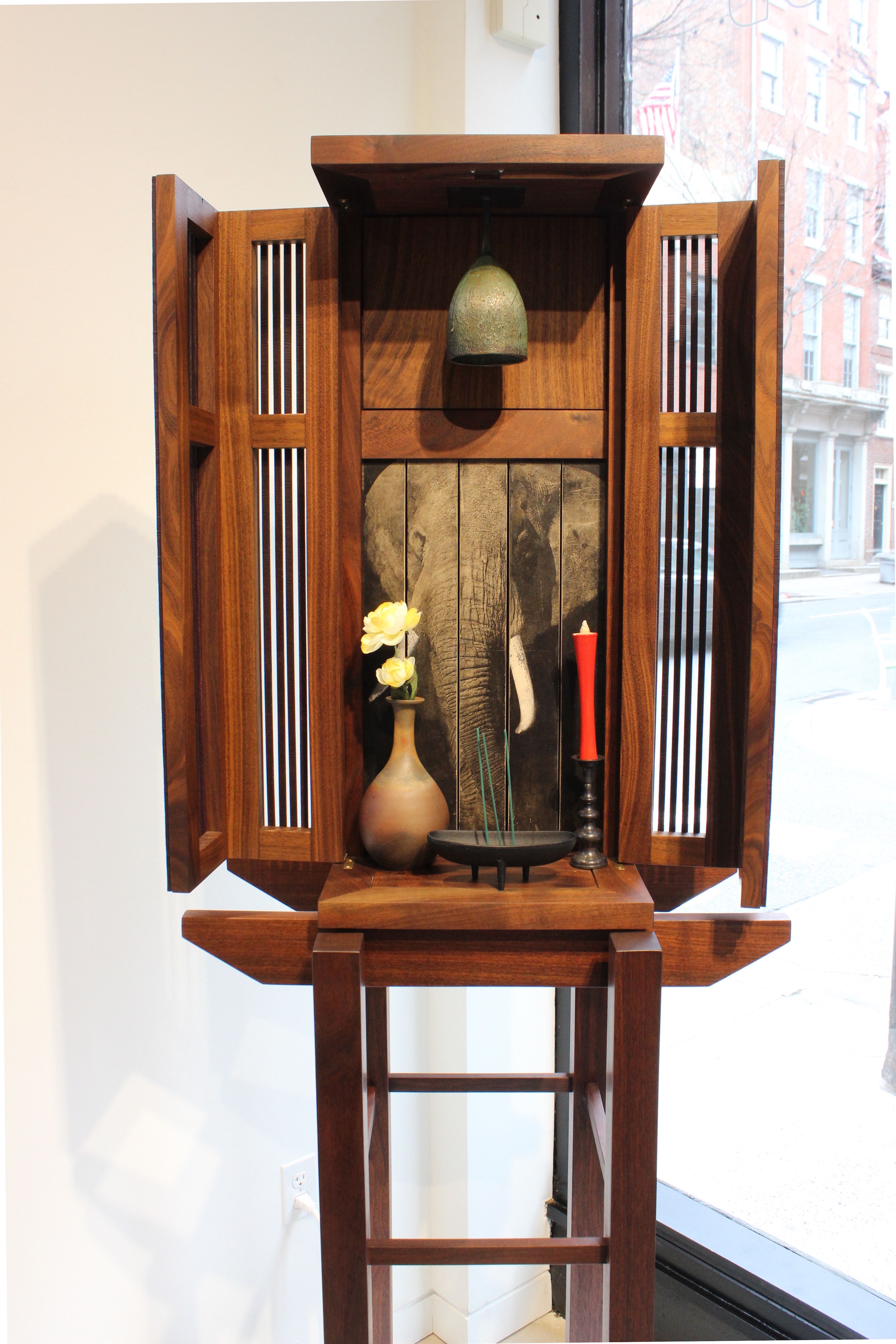
At The Center for Art in Wood in Philadelphia, Wendy Maruyama gives voices to earth’s silent giants
Above: Wendy Maruyama, “Sarcophagus.” All photos by Chip Schwartz.
Although best known for her work in designing furniture pieces that verge on the conceptual, Wendy Maruyama has worked for decades utilizing countless mediums. Frequently she has explored themes that stem from her Japanese heritage, as well as feminism and social practice. The latter has led Maruyama to her current project “wildLIFE,” which is on display at Philadelphia’s Center for Art in Wood located in Old City. In it lies the hope that raising awareness concerning the plight of elephant populations can help pull these remarkable, gigantic creatures away from the brink of extinction.
Following a visit to Kenya where she met with wildlife advocates to investigate the dangers of poaching elephants and rhinos, Maruyama became active in bringing attention to conservation efforts that protect these giant mammals from their primate contemporaries. Through her artwork, Maruyama examines the ivory trade–both past and present–as one of the primary factors for the decline of elephant populations, while placing a special emphasis on their unique social nature and their many similarities to human beings.

Wendy Maruyama, “Bell Shrine.”
In “Bell Shrine,” Maruyama’s altarpiece is constructed from walnut salvaged from a defunct rifle factory–a terrible irony that contrasts with the solemn nature of the work. An image of an elephant stands behind a candle, a vase with white flowers and some sticks on incense. Hanging from above is a bronze bell that rings every 15 minutes in honor of every elephant that loses its life to poaching.
Directly across from the shrine lies a black wooden case with transparent glass sides. Entitled “Sarcophagus,” this pristine tomb contains a number of blown glass ‘elephant tusks’ meant to portray the primary reason that these magnificent creatures are hunted, often precariously close to extinction. In fact, one wall text explains that the Romans decimated North Africa’s elephant population by A.D. 77 in pursuit of ivory. Although the hunting of elephants is now illegal and they are widely protected, many groups, including terrorist organizations, still jeopardize these animals for profit. During the last century alone, elephant populations have dropped from three million to fewer than 500,000.
While much of the literature and some of the imagery in “wildLIFE” is quite grave, six enormous elephant head sculptures steal the show and bestow it with a sense of hopeful awe. These busts are between 8 and 12 feet tall, making them roughly life-sized, and are composed of wooden panels tied together with string. Adapting Japanese Buddhist traditions for these distinctly non-Japanese animals seems to come naturally to Maruyama, and each of these elephant faces rightly becomes an object of veneration.

Wendy Maruyama, “Satao.”
The largest of these creations, “Satao,” is named after an actual elephant who lived for some 45 years until he was killed by poachers in 2014. Known as ‘tusker’ because his tusks were so big they nearly touched the ground, he must have been a sight to behold. Maruyama’s memorial to one of the world’s largest elephants is painted mostly in a matte black color, as if in mourning, and its forehead is covered in panels of Japanese calligraphy. Splashes of green might hint at Satao’s death from the tip of a poisoned arrow, while bullseyes and gun sights dispel any doubt as to his life cut short.
Elsewhere, other faceted pachyderms reside silently on the walls as witnesses to the stories elephants cannot tell, but which Maruyama has taken upon herself to disseminate: one, a map of Africa; another in shades of white, a ghost. As human beings, we have the ability to tell stories and share information. We also have the power so shape our environment, for better or for worse. With Maruyama as a messenger–as the steward of these spectacular animals whose voices we cannot hear–perhaps we can all work together towards a brighter future where elephants are our peers instead of our prey. “wildLIFE” will be on display through April 23.
Recent Content
-
Artsarticle ·
-
Artsarticle ·
-
Artsarticle ·
